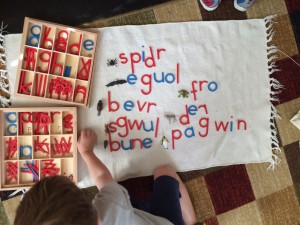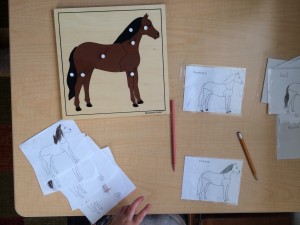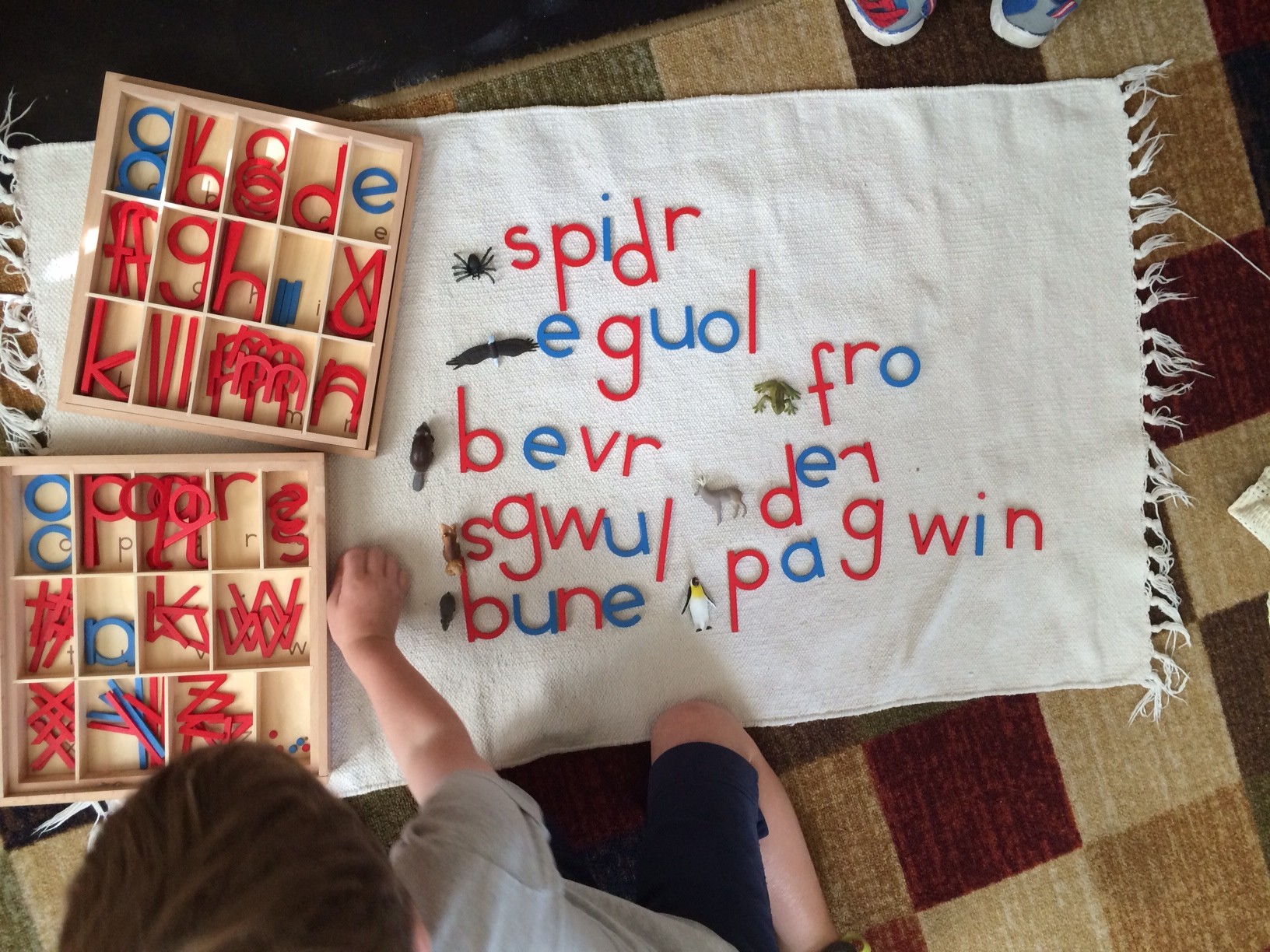This morning several students were independently working on writing & spelling activities.

It is fantastic seeing these expressions of Maria Montessori’s own observations from over 100 years ago. In her book The Montessori Method she describes how while spoken language is a social instrument of humans, so it is that “written language may be considered in itself, in its formation, as an organic ensemble of new mechanisms which are establish in the nervous system, and as an instrument which may be utilized for social ends.” (p. 310)
What you see in the photos on this page are several different students at different stages of physiological and nervous development. It is impressive to see these different stages happening simultaneously in a multi-age Montessori classroom. In children, Montessori wrote, “muscular sense is most easily developed in infancy, and this makes writing exceedingly easy for children. It is not so with reading, which requires a much longer course of instruction.” (p. 266). Further, they have “two periods in the development of language: a lower one which prepares the nervous channel and the central mechanisms which are to put the sensory channels in relation with the motor channels and a higher one determined by the high psychic activities which are exteriorized by means of the performed mechanisms of language.” (pp. 312-313) Basically, these manipulations of letters are the necessary and enjoyable precursors to reading and writing on a higher level.

As for the spelling, Montessori leaves no doubt that children will eventually correct their spelling as the routines of language become evident to them. As the child lays out the letters s/he sounds them out and “analyzes, perfects, fixes his own spoken language,–placing an object in correspondence to every sound which he utters.” (p 283). Montessori was describing what today we describe as Inventive Spelling.
Right after I took the picture at right, the child asked me “Is there a “u” in this?” as he pointed to “egoul.” I asked him what he thought, and he tentatively said “I think so.” He knew there was likely an error, though it was neither the time nor place for me to explain about silent As and Es. Rather, I have complete confidence that one day soon he will see the word “eagle” in a book and he will internalize the correction.
And, lastly, the horse below is a subtle Montessori language tool. Children are invariably interested in natural–the plants and animals. We introduce these puzzles (horse, butterfly, tree, flower, etc.) to children at a young age. A two-year old might “just” do the puzzle. Though really that 2-year old is preparing to be three, at which point s/he is given the papers you see in the lower-left of the photo below and are asked to color in the body part according to the prepared guides (below, at right). The guides include the vocabulary word for that body part, which the child is happy to copy onto their colored drawing, and include in their “Parts of a Horse Book.”

(Quotes on this page from Montessori, Maria, The Montessori Method, by Schocken Books, New York, 1964. Translated from the Italian by Anne E George, first published in English in 1912.)
